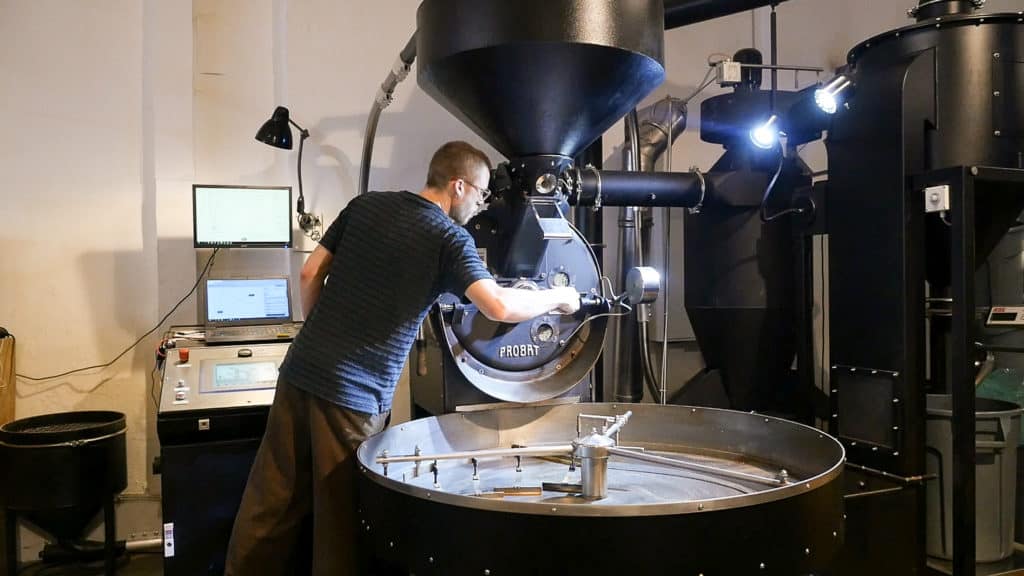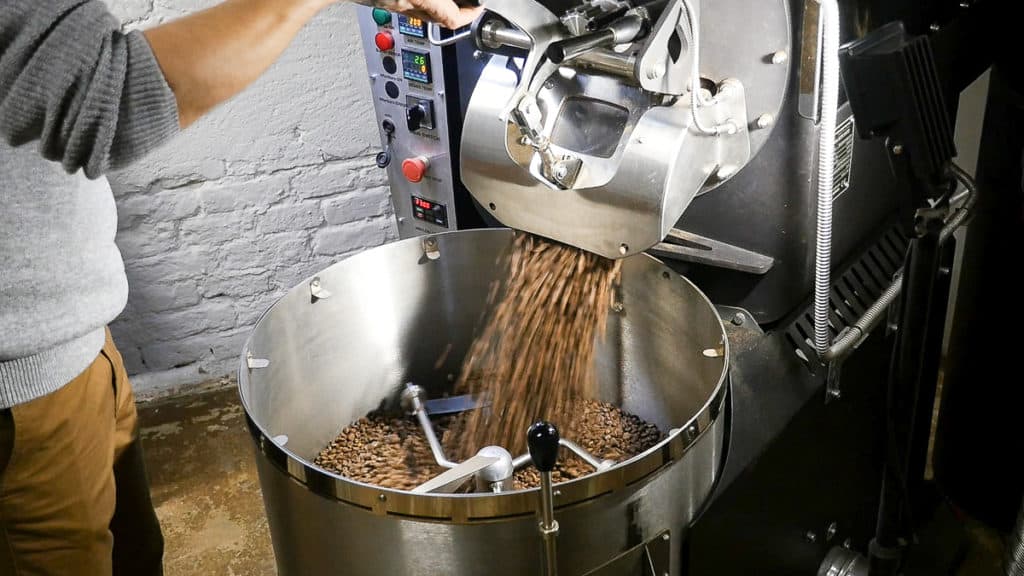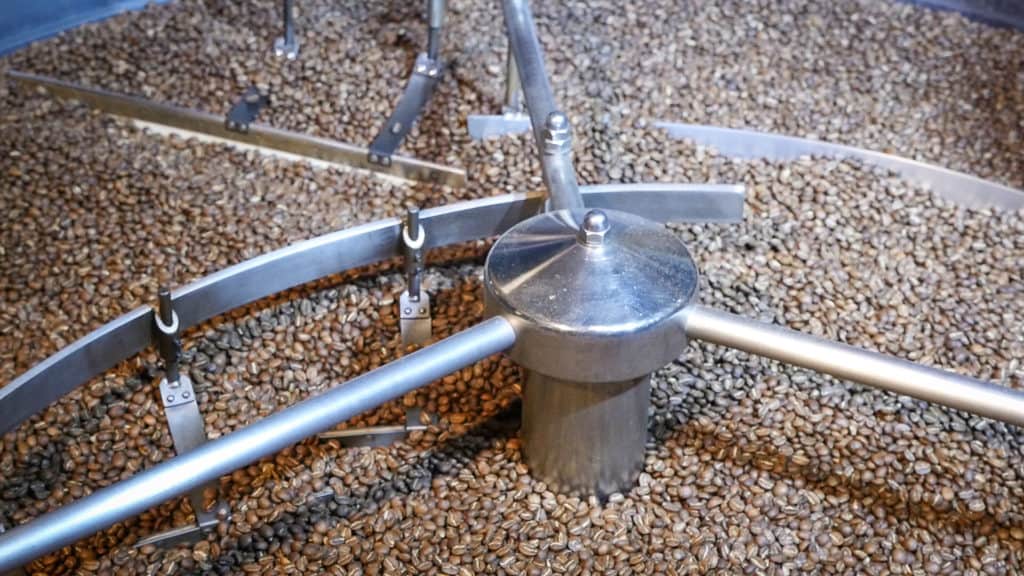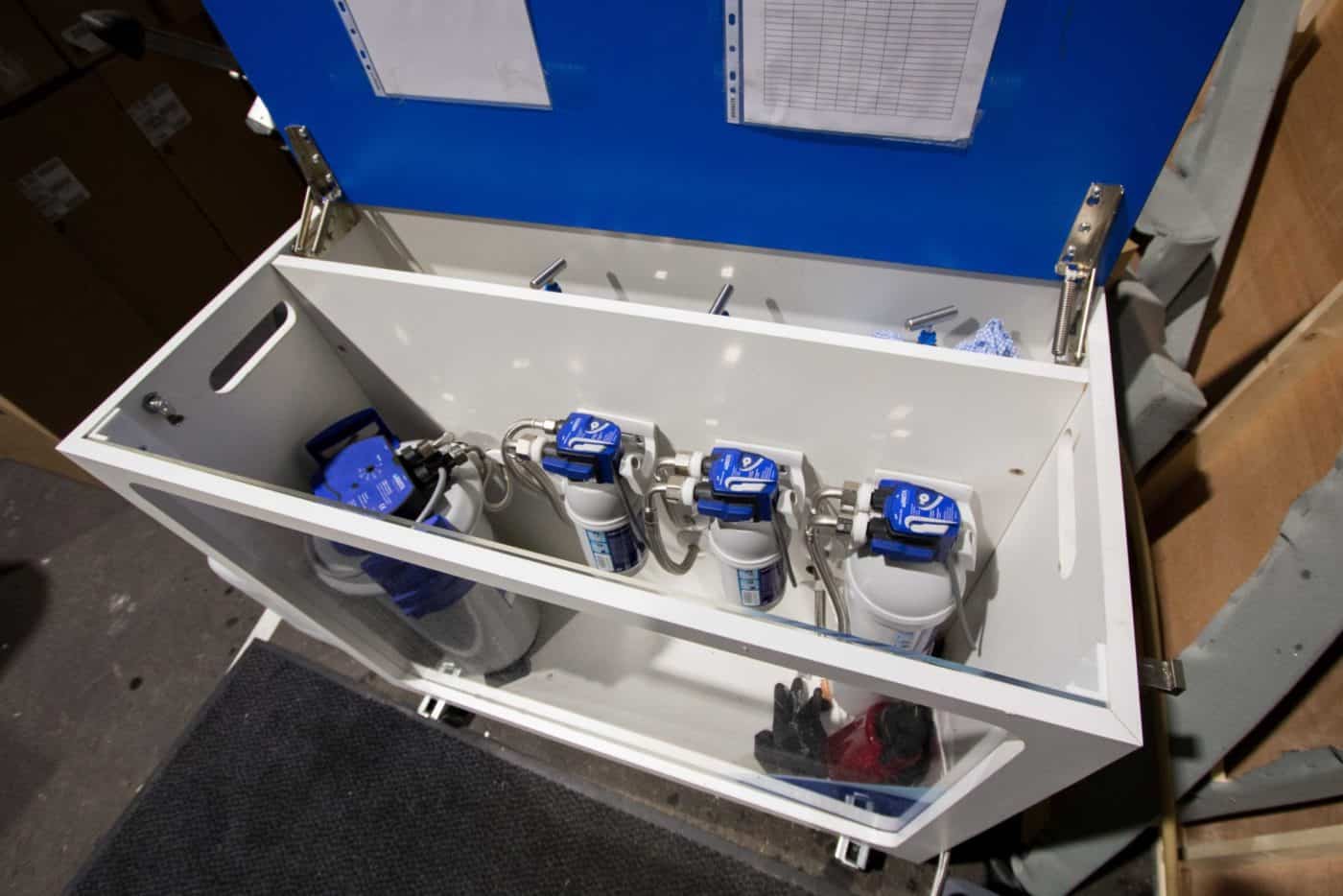Overall, the coffee bean experiences total transformation on all levels, a complete disaster in a really violent fashion. It basically explodes.
During the roasting process, there are two levels on which something happens to coffee beans: the chemical and physical level.
On the chemical level, coffee roasting replicates the ripening of the fruit in nature.
On the physical level, the roasting transforms bean matter from cellulose towards charcoal.

Let’s see what happens on the chemical level first and then on
Inside the bean, most of the hundreds of chemical substances undergo change. Some of them diminish, some disappear, some transform and some combine with each other and form new substances, but some remain as they are.
The main things that interest us on this level of the bean are sugars and acids, the perceivable quantities in which they are preserved and the ways in which they are balanced with each other at the end of the roast. But with

On the physical level, the bean mater (cellulose, i.e., wood) starts burning in a very slow fashion. During heating, bean matter becomes soft and stretchy, leather-like with the help of water that is inside the bean. The water that is within the bean cells starts to turn into steam and creates pressure due to heating. That pressure helps stretch the soft and leather-like cellulose matter and makes the coffee beans expand. When the bean matter reaches its stretch limits but pressure within the cells continues to grow, the pressure breaks the cell walls to be released. This creates a cracking sound. While the water inside the cell is building pressure, the water outside the cells, the free moisture, evaporates from the bean and this makes the bean dryer. So, we are drying the bean simultaneously.
Throughout all this process, the longer the bean is heated with continually increasing temperature, the darker and dryer the bean becomes. It’s a natural burning process we experience when we toast a slice of bread or burn wood, only in slow motion.

When we finally cool the brown roasted coffee beans, the stretchy softness of the cellulose turns brittle. That brittleness comes from lack of water that helps soften the bean cell tissue. The darker the roast, the less water remains in the bean and the more fragile the bean becomes.
When we roast coffee, we juggle with two aspects of the coffee: the chemical and physical. The key is to find the proper balance between the two.
It is an excerpt from Coffee Roasting Made Easy written by Raimond Feil published in 2018. You can learn more about Raimond in our podcast interview recorded just before the book was finished.

